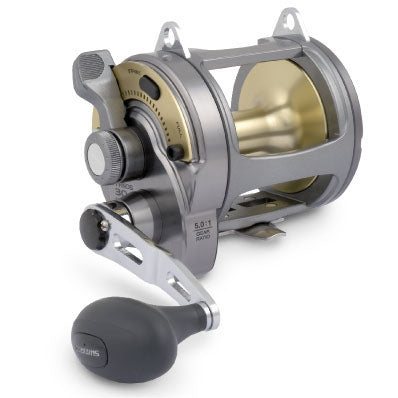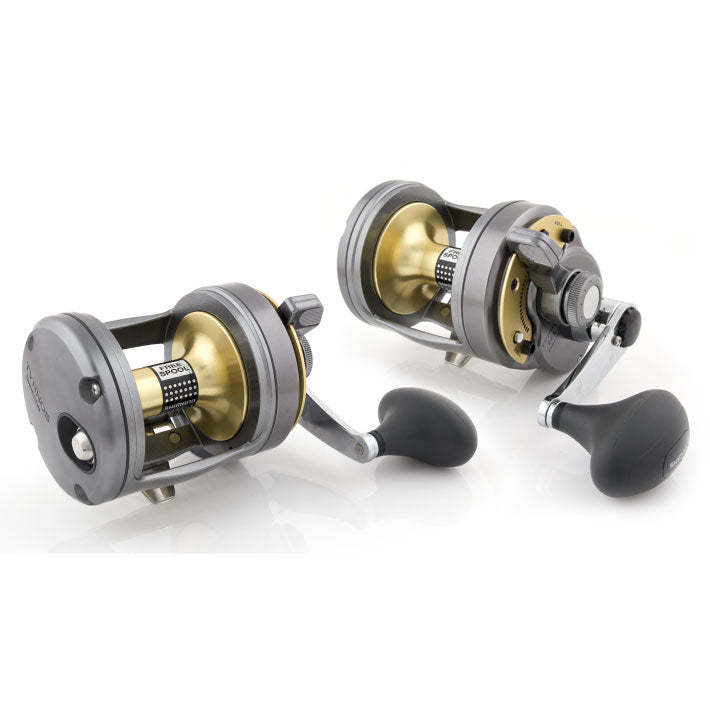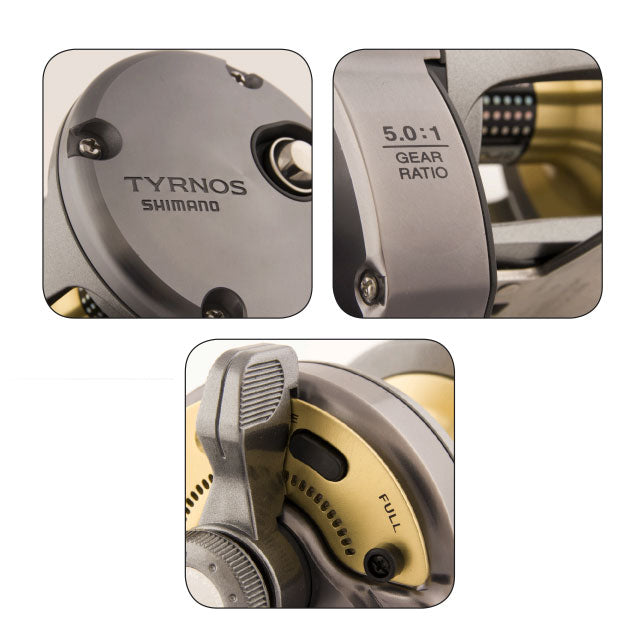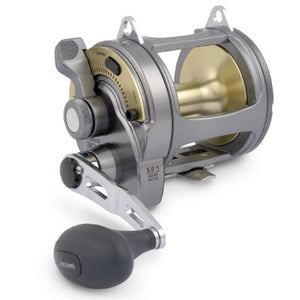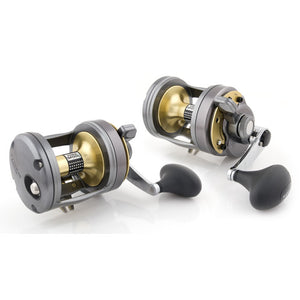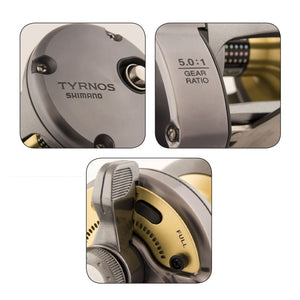The Tyrnos 30 is the reel currently in vogue on the British shark-angling scene. When loaded with modern, ultra-low diameter braided lines such as PowerPro, the smallest models within the Tyrnos range are proving increasingly popular with specialist anglers.
The reels are small and light enough to fish comfortably all day for key species such as cod, ling and pollack, yet retain the inherent strength and high levels of engineering to comfortably handle the most powerful species available in Europe, including the likes of wreck conger, giant skate and sharks offshore in deep water.
Shimano Tyrnos Lever Drag Fishing Reel Features
- Hagane Body - is produced from highrigidity aluminium or magnesium. This creates stiffness and impact resistance, while at the same time eliminating flexing of the body. The result is a rocksolid housing and support for the moving internal gearing and greater efficiency throughout the reel.
- ARB - The secret of longterm rotation performance is to prevent any form of rust, corrosion or oxidisation of the bearings, which can cause a reduction in the reels performance over time. Shimano ARB bearings are the answer to this and are fitted as standard on most Shimano freshwater reels and on all Shimano saltwater models.
- Waterproof Drag - Using special protection gaskets, the drag is protected against the intrusion of water for more consistent drag performance.
- Diecast Aluminium - is used for many types of reel and is most common on fixed spool reel bodies and rotors. It is also used for spools on P4 fixed spool reels and come baitcasting models.
- Clicker System - Increases the tension on Freespool and activates a clicking alarm when a fish bites.
- 2 Speed Gearing - This shifting mechanism is designed so that gearing changes are quick and easy, even when fighting a fish. The low gear ratio used for highpower retrieves is selected by pushing the button on the base of the handle. Return to the highspeed ratio by sliding the release button along the handle shank. By using two sets of gears, the drive and pinion gears are always engaged. There is no gear meshing during the shift.











